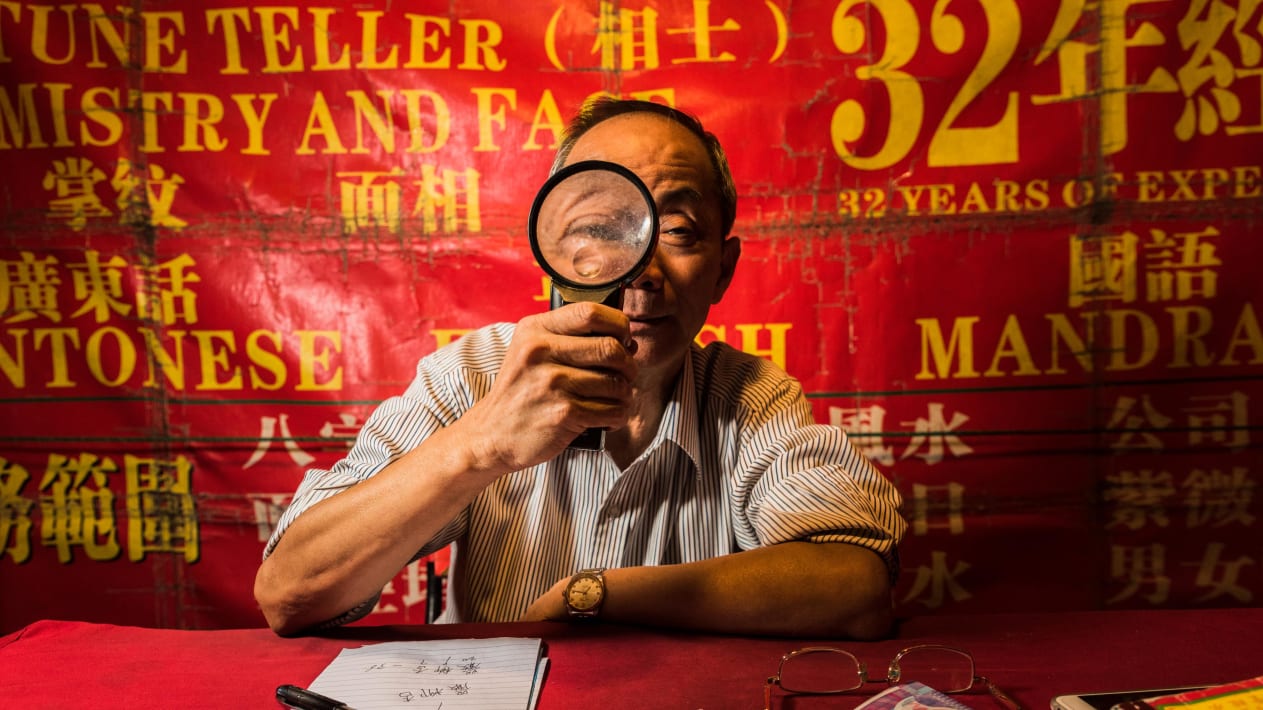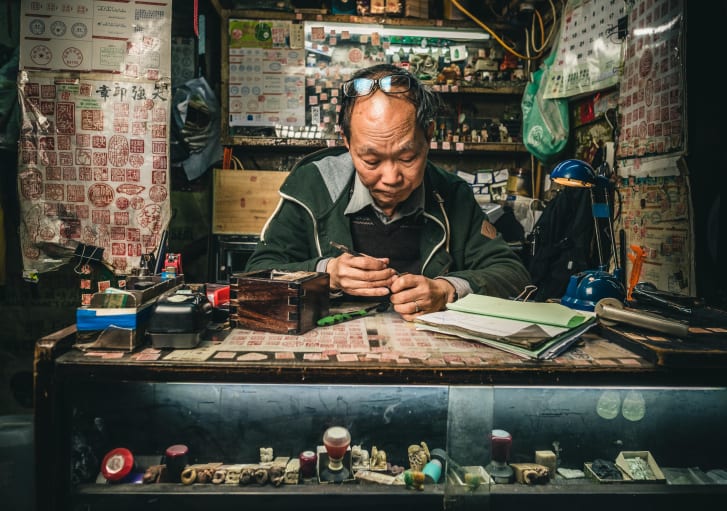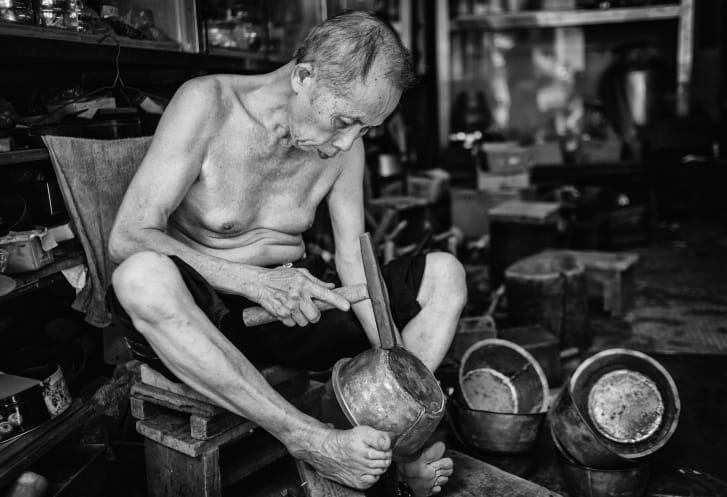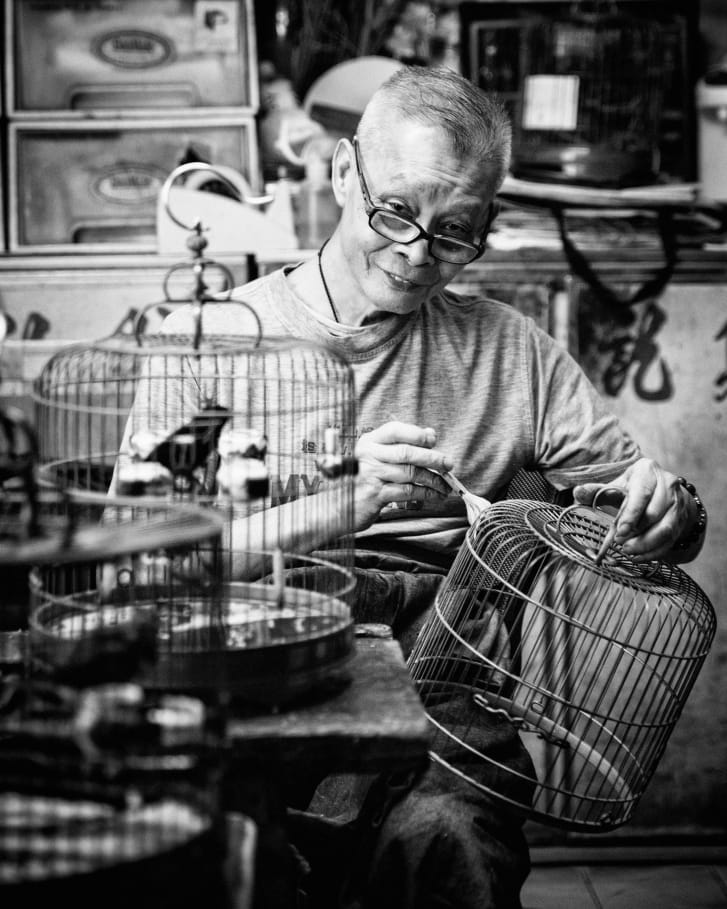Fortune tellers, letter writers and the last of Hong Kong's traditional trades
Published 18th February 2019

Credit: Gary Jones
Written by Lindsay Varty
Lindsay Varty is a Hong Kong-based journalist and professional rugby player. The following is an edited excerpt from her book "Sunset Survivors," accompanied by photos by Gary Jones.
From fortune tellers to professional letter writers, many of Hong Kong's street-savvy, traditional entrepreneurs have devoted their entire lives to ancient and increasingly forgotten practices.
These tenacious tradesmen and women -- however clandestine against the city's frantic urban backdrop -- are essential ingredients in Hong Kong's cultural identity.
But with almost no willing successors, skyrocketing rents and little chance of competing with larger companies, simply surviving has proven almost impossible. Along with photographer Gary Jones, I captured a glimpse of the hardy few who have battled the odds and continue to run their businesses today.
Mak Ping Lam, traditional seal maker

Mak Ping Lam learned the art of seal-making from his brother-in-law, and has since passed on his trade to his son, who works with him. Credit: Gary Jones
Despite having been in the seal-making business for half a century, Mak Ping Lam keeps his tools simple: a few rusty knives, a small wooden vice, one scrap of sandpaper and the bottom half of a soda can, which he uses as an ink tray.
Chinese seals, or 'chops,' were used as a form of identification for legal papers, bank transfers and documents requiring authorship. In mainland China and Taiwan, they are still used on checks in lieu of a signature, though not in Hong Kong.
To make a seal, Mak drafts a 2-square-centimeter (0.6-square-inch) design, and draws a mirror image of it onto the base of the seal. Only then can he begin to etch it into stone.
"Some fortune tellers tell people to come here, make a chop to put on their desk and they will get good luck," he said. "I don't know if it works or not."
Au-yeung Ping-chi, paper effigy maker

Au-yeung Ping-chi hand-makes paper effigies, which are burned as offerings to the deceased. Credit: Gary Jones
Burning paper effigies as offerings to the deceased is a common religious practice in Hong Kong. Artists carefully bend thin strips of bamboo into various shapes, before coating them with joss paper and paint.
For ten hours every day, effigy maker Au-yeung Ping-chi hand-makes some of the most detailed and often bizarre paper designs found in Hong Kong. From food, clothes and houses, to laptops and even full-sized massage chairs, he produces replicas of items that customers hope will join their loved ones in the afterlife.
Over the years, Au-yeung has seen people's requests change, from simpler pleasures like shoes to more modern items, like Nintendo Gameboys.
"People in the past were simpler -- they didn't need much even when they were alive," he said.
"When I die, I would like some cars, houses and a hi-fi system ... A super deluxe seven-foot-long Mercedes-Benz and Porsche will do."
Luk Shu Choi and Luk Keung Choi, copperware craftsmen

The Luk brothers are sons of the late Luk Bing, who established Bing Kee Copperware in the 1940s. The store still produces copper items for restaurants, homes, tea shops and hotels. Credit: Gary Jones
In the 1950s and 1960s, most Hong Kong families used copperware pots, pans and kettles. But the material was gradually replaced by stainless steel, which is easier to clean and less reactive to acid.
Chinese herbal tea shops still choose copper over steel -- as do some chefs, because of its ability to heat quickly and evenly. However, very few places in Hong Kong continue to make these products.
The Luk brothers learned the trade from their father, and they still work in the family's old shop. It takes a full day to finish one pot, which they sell for about 700 Hong Kong dollars ($89). Their shop is brimming with handcrafted kitchenware, urns, door knockers and other trinkets.
"I cook with copper utensils," older brother Luk Shu Choi said. "But I also like to use an electronic rice cooker as it's really convenient. You can't just stick with the old things; we also have to follow trends and the development of the world."
Chan Lok Hoi, bamboo birdcage maker

Chan Lok Choi has been making cages since he was 13 years old. He still operates from a small shop in the Yuen Po Street Bird Garden. Credit: Gary Jones
Chan Lok Choi has been making birdcages since he was just 13 years old. Taught by his uncle and another famous cage-maker, Chan's craft sees him bending bamboo rods into place, carving patterns or scriptures onto them and then painting the cage.
Taking caged birds to parks in the morning was once a common practice in Hong Kong. You would often see the cages hanging from trees, while owners read newspapers or played mahjong.
A handful of these bird-lovers can still be found today, either in the city's parks or at the Yuen Po Bird Market, where Chan's shop is located. But criticism from animal rights groups and the arrival of avian flu in 2012 -- which led to caged birds being banned on public transport -- have dampened this tradition.
"I would love to have an apprentice," Chan said. "But no-one with a school education seems to be interested in learning these handicraft skills any more."









 Reply With Quote
Reply With Quote